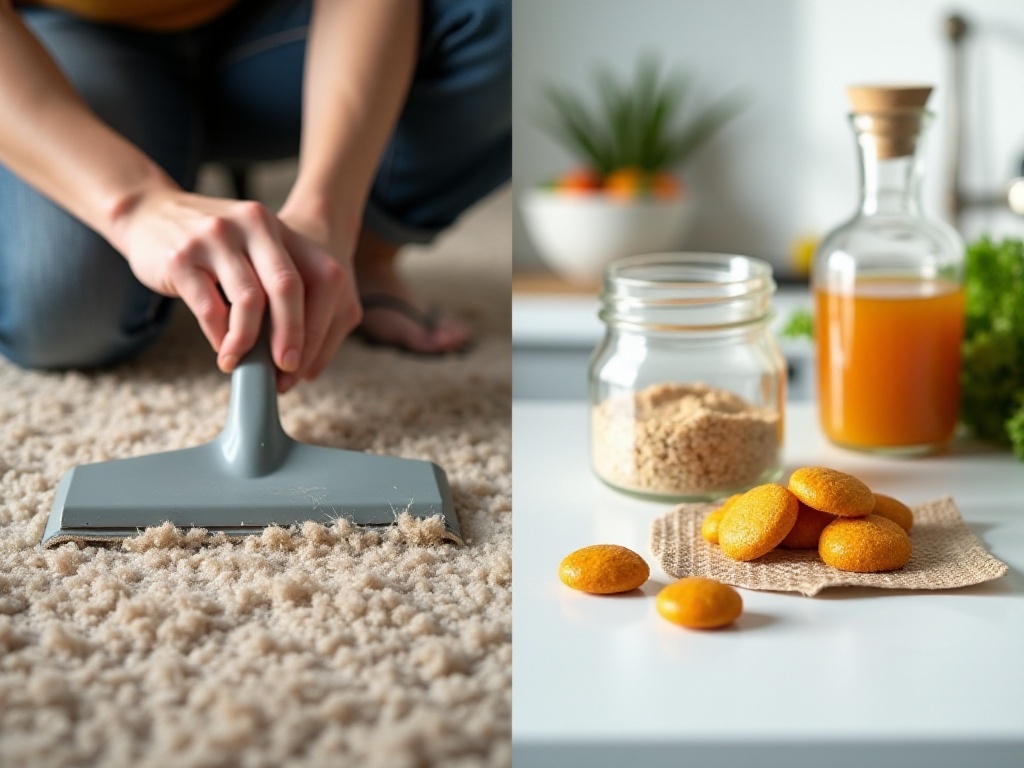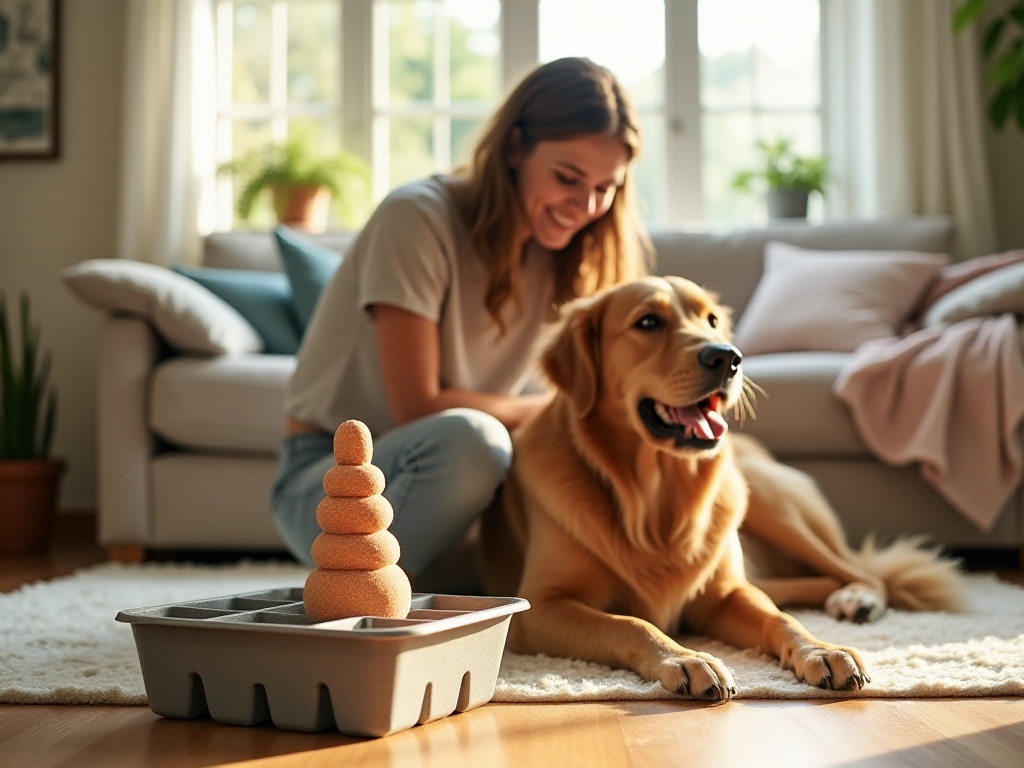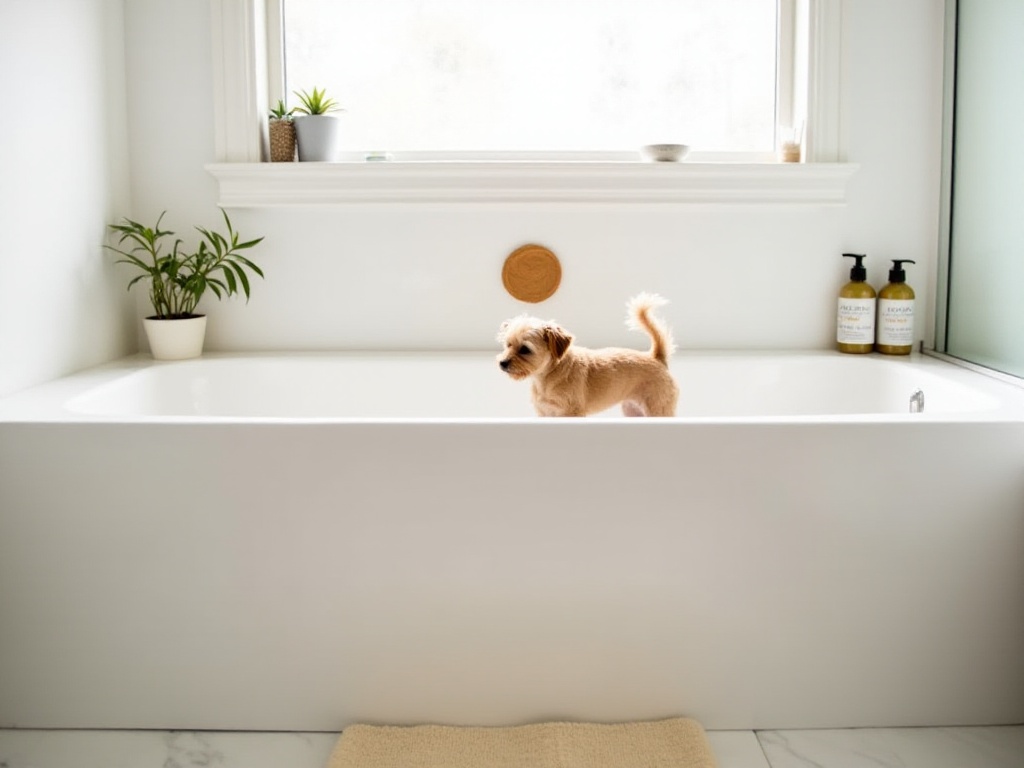Introduction
As an experienced pet parent who has had pets for several years, I completely understand how challenging it can be to care for our furry friends. Just cleaning up their fur alone can be exhausting, not to mention the daily care and behavioral training that can be even more headache-inducing. However, today I want to share some super practical tips I've discovered over the years. Each one comes from real experience, guaranteed to save you time and effort!
Fur Management
When it comes to the most frustrating aspects of pet ownership, nothing beats having fur all over the house. It's especially maddening during shedding season. You've just mopped the floor, and in the blink of an eye, there's another layer of fur, and the sofa looks even worse. But don't worry, I've discovered an amazing tool - a squeegee!
When I first heard about using a squeegee to clean pet fur, I was skeptical. Then one day, fed up with fur everywhere, I decided to try the squeegee we had at home. To my surprise, it worked incredibly well! Just one light sweep, and all that stubborn fur gathered into a neat pile. Compared to the inefficient vacuum cleaner method, this was a complete game-changer.
I remember once when guests were coming over, and the sofa was covered in cat fur. I quickly grabbed the squeegee and had it cleaned up in no time. My friends were amazed and kept asking what this magical tool was. Now, all my pet parent friends have their own squeegees - it's become our essential tool.
Speaking of cleaning, dealing with pet urine stains can be particularly challenging. This is especially true for new pet parents with kittens or puppies. Professional cleaners are expensive and don't always work well. Actually, you don't need to waste money on these - common household baking soda and white vinegar can perfectly solve this problem.
The process is actually very simple. First, use paper towels or a cloth to absorb as much urine as possible - this step is crucial, and you should be patient to blot multiple times. Then prepare a spray bottle with equal parts water and white vinegar, and spray it evenly on the stain. Next, sprinkle a layer of baking soda on top. You'll notice the baking soda and vinegar solution start to react, making a slight fizzing sound - this means the cleaning process has begun. Wait until it's completely dry, then vacuum up the remaining baking soda, and you're done.
Last week, my cat accidentally left a urine stain on our new carpet. I immediately used this method. Honestly, I was worried it might damage the carpet, but not only did it completely eliminate the odor, it didn't leave any trace behind. This method is both eco-friendly and economical, and most importantly, it works extremely well.

Seasonal Care
One of the most important aspects of pet care is adjusting your approach according to the seasons. Just like humans need different skincare products for different seasons, our furry friends need season-appropriate care plans too.
Winter is a particularly challenging season for pet parents. The cold, dry weather that makes our hands and feet crack can also affect our dogs' paw pads. The first time I discovered my dog's cracked paw pads, I was heartbroken. Later, I learned a great tip from an experienced pet parent: using Vaseline for paw pad care.
Every night before bed, I give my dog a simple paw pad treatment. First, I wash their paws with warm water, dry them thoroughly, then apply a thin layer of Vaseline and gently massage it in. Dogs might feel uncomfortable at first, but after persisting for a while, they'll start to enjoy this care routine. Now, every evening, my dog automatically extends their paws to me, waiting for their "spa time."
Summer is also a challenging season for our furry friends. Their thick fur makes them particularly susceptible to heat stroke, so cooling methods are crucial. I've set up an inflatable pool specifically for my dog at home - it's not very big, but it's enough for them to play and cool down.
I remember the first time I set up the pool, my dogs were so excited they splashed around for ages and didn't want to get out. However, I should remind everyone that the pool water needs to be changed frequently, preferably daily. Also, the water shouldn't be too deep - just enough to reach the dog's belly is ideal. I usually place some floating toys nearby to make it more fun for them.
Speaking of cooling down, I have another particularly popular tip: frozen toys. I prepare several toy balls that can hold treats, fill them with dog food or treats, then freeze them for a few hours. When it's playtime, the dogs can enjoy the coolness while looking for treats - they absolutely love it!
However, keep in mind that frozen toys shouldn't be played with for too long - usually 15-20 minutes is enough. Also, the amount of frozen food should be moderate to prevent upset stomachs. I usually prepare several toys to rotate, which helps maintain their interest while preventing them from getting too cold.

Diet Management
When it comes to pet care challenges, weight control definitely ranks in the top three. Especially with the increasing variety of pet treats available nowadays, it's easy to accidentally overfeed them. My Golden Retriever is a typical foodie - without control, they'd probably eat themselves into a ball.
Helping pets lose weight without making them feel hungry is indeed a challenge. After multiple attempts, I discovered a particularly effective method: the green pea diet. The specific approach is to add an appropriate amount of unsalted peas to their regular dog food. Peas are low in calories and high in fiber, creating a feeling of fullness without excess calories.
When I first implemented this method, I was worried my dog would be picky and refuse to eat. Surprisingly, they actually enjoyed it, perhaps because the peas added variety to their food texture. Plus, peas are highly nutritious, providing quality protein and dietary fiber for dogs.
However, I should remind everyone that the amount of peas should be increased gradually - start with a small amount and let your dog adjust slowly. Also, the peas must be cooked; raw peas might cause digestive issues. I usually cook a batch at once, divide it into small portions to freeze, and take out what I need when necessary.
Speaking of diet, another particularly useful trick is placing a tennis ball in the food bowl. This method might sound strange, but it really works. The ball prevents dogs from scooping up too much food at once, forcing them to eat slowly, which effectively prevents them from wolfing down their food.
My Golden Retriever used to be a typical "vacuum cleaner," practically inhaling their food and finishing a bowl of dog food in less than a minute. With the tennis ball method, they have to slow down, and meal times have extended from under a minute to five or six minutes. This not only prevents indigestion but also helps them better recognize when they're full, which is very helpful for weight control.
Besides these methods, regular exercise is also crucial for weight control. I take my dog for walks at least twice daily, about thirty minutes each time. On weekends, we go to the park to play frisbee or other interactive games. Exercise not only helps control weight but also strengthens our bond.
Behavioral Training
When it comes to pet ownership, behavioral training is definitely an unavoidable topic. Many new pet parents find themselves overwhelmed by their pets' various "mischievous" behaviors. Actually, with the right methods, training isn't as difficult as imagined.
The most important thing is establishing the correct reward system. In my experience, it's better to encourage good behavior than to punish bad behavior. For example, if you don't want your dog sleeping on the couch, instead of scolding them every time you catch them there, reward them when they choose to sleep in their own bed.
When my dog first arrived, they had a particular fondness for chewing shoes - it was absolutely maddening. Later, I started keeping plenty of dog-specific chew toys around the house. Whenever I caught them about to chew shoes, I'd immediately redirect their attention to a toy. When they started playing with the toy, I'd immediately praise and reward them. After persisting for a while, they gradually developed the habit of only chewing their own toys.
During training, it's important to maintain patience and consistency. You can't have different requirements from one day to the next - this will only confuse the dog. Also, it's essential to choose appropriate training times, such as when the dog is energetic and in a good mood, as training will be more effective then.

Daily Care
Daily care is an essential part of pet ownership, including brushing fur, teeth cleaning, ear cleaning, and more. Many pet parents might find these tasks troublesome, but once you develop a routine, they don't actually take up much time.
Brushing fur is the most basic care task. I usually brush my dog while watching TV in the evening - this helps pass the time while letting the dog enjoy a massage. When brushing, remember to follow the direction of fur growth, use gentle movements, and be especially careful with areas prone to tangling.
Teeth cleaning does require some technique. At first, you can let the dog get used to you touching their mouth by gently massaging their gums with your finger dipped in dog toothpaste. Once they're comfortable with this, gradually introduce the toothbrush. My dog is now very cooperative with teeth brushing and even asks for extra rewards afterward.
Ear cleaning is also an important care task. This is especially important for breeds with drooping ears, as they're more prone to ear problems. I regularly use special pet ear cleaner to clean my dog's ears, always being gentle and never using excessive force. If you notice your dog frequently scratches their ears or shakes their head, you should check for ear problems.


